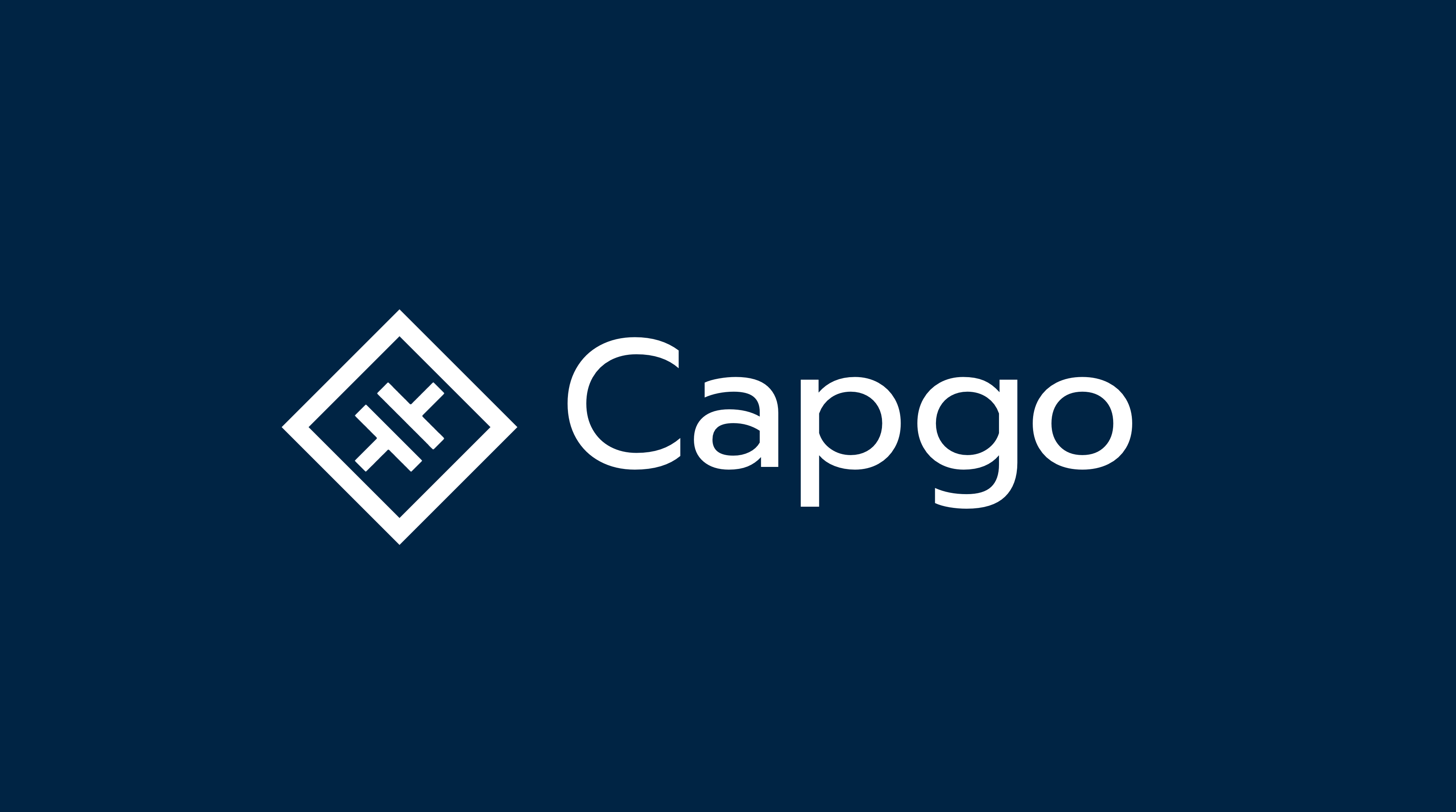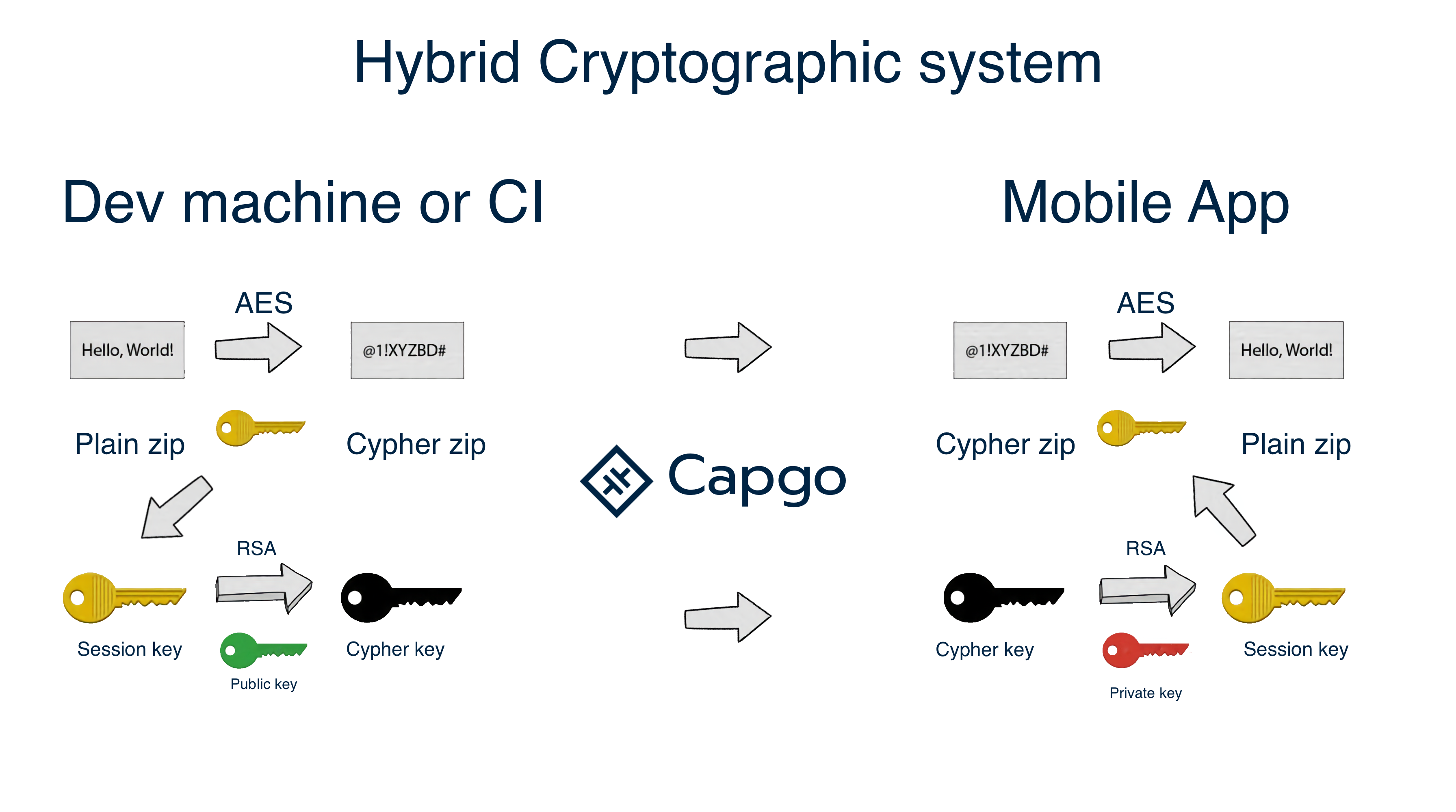A CLI to upload and download files from the Capgo Cloud.
Before use the CLI, you should register here : https://capgo.app/
Then go to your account in apikey section and click in the all key to copy it.
npx @capgo/cli init [apikey]
This method is here to onboard you step by step.
It will add your app to Capgo. It will add the code to your app to validate the update. Likewise, it will build your app. Furthermore, it will upload your app to Capgo. And it will help you to check if the update works.
npx @capgo/cli login [apikey]
This method is here to remember the apikey for you.
:::note
use --apikey=******** in any command to override it
:::
Optionaly you can give:
--local This will store your apikey in the local repo and git ignore it.
npx @capgo/cli doctor
Command to check if you are up-to-date with Capgo packages.
This command will also be useful for bug report.
npx @capgo/cli app add [appId]
[appId] your app ID the format com.test.app is explained here.
💡 All option will be guessed in your config if not provided.
Optionally, you can give:
-
--icon [/path/to/my/icon]to have a custom icon display in Capgo web app. -
--name [test]to have a custom name in the list. -
--apikey [key]API key to link to your account.
Example of capacitor.config.json for appId and AppName, the icon is guess in the resources folder
{
"appId": "ee.forgr.capacitor_go",
"appName": "Capgo",
"webDir": "dist"
}npx @capgo/cli app set [appId]
[appId] is your app ID, the format is explained here.
Optionally, you can give:
-
--icon [/path/to/my/icon]to have a custom icon display in Capgo web app. -
--name [test]to have a custom name in the list. -
--retention [retention]retention period of app bundle in days, 0 by default = infinite. -
--apikey [key]API key to link to your account.
npx @capgo/cli app list [appId]
[appId] your app ID the format com.test.app is explained here.
Optionally, you can give:
-
--apikey [key]API key to link to your account.
npx @capgo/cli app delete [appId]
[appId] your app ID the format com.test.app is explained here.
Optionally, you can give:
-
--apikey [key]API key to link to your account. -
--bundlewith the version number will only delete this version.
npx @capgo/cli app debug [appId]
[appId] your app ID the format com.test.app is explained here.
Optionally, you can give:
-
--apikey [key]API key to link to your account. -
--devicewith the specific device you want to debug
npx @capgo/cli bundle upload [appId]
[appId] is your app ID, the format is explained here.
Optionally, you can give:
-
--apikey [key]API key to link to your account. -
--path [/path/to/my/bundle]to upload a specific folder. -
--channel [test]to upload to a specific channel. -
--external="https://mydomain.com/myapp.zip"to link to an external URL instead of upload to Capgo cloud, it should be a zip URL in HTTPS. -
--key [/path/to/my/private_key]the path of your private key. -
--key-data [privateKey]the private key data, if you want to use inline. -
--no-keyto ignore the signing key and send clear update. -
--bundle [1.0.0]to set the bundle version number of the file to upload. -
--iv-session-key [key]to send a custom session key to the cloud. -
--s3-apikey [key]API key to upload to an AWS S3 account directly. -
--s3-apisecret [secretkey]API secret necessary for uploading to S3. -
--s3-region [region]to set the region of the AWS S3 account of the two previous API keys. -
--s3-bucket-name [bucketName]to set the name of the AWS S3 bucket to which upload. -
--bundle-urlprints bundle url into stdout. Useful when parsing bundle url from shell. -
--no-code-checkto ignore the code check and send the bundle anyway.
⭐️ External option helps to unlock 2 cases: corporate with privacy concern, don't send the code to a third part and app bigger than 200 MB. With this setting, Capgo store only the link to the zip and sends the link to all apps.
👀 Capgo cloud never looks at what is in the link (for external option), or in the code when stored.
🔑 You can add a second layer of security by using encryption, then Capgo will not be able to look or modify anything, it becomes “trustless”.
Example of package.json for version
{
"version": "1.0.2"
}⛔ Version should be greater than “0.0.0”.
💡 Don't forget to update the version number each time you send one, or the device will don't see the update.
npx @capgo/cli bundle list [appId]
[appId] your app ID the format com.test.app is explained here.
Optionally, you can give:
-
--apikey [key]API key to link to your account.
npx @capgo/cli bundle delete [appId]
[appId] your app ID the format com.test.app is explained here.
Optionally, you can give:
-
--apikey [key]API key to link to your account. -
--bundlewith the version number will only delete this version.
in a SemVer range for a major version to Cloud
npx @capgo/cli bundle cleanup [appId] --bundle=[majorVersion] --keep=[numberToKeep]
[appId] your app ID the format com.test.app is explained here.
Optionally, you can give:
-
--apikey [key]API key to link to your account. -
--bundle [majorVersion]a version you wish to remove previous packages for, it will keep the last one +numberToKeep. -
--keep [numberToKeep]the number of packages you wish to keep (default 4).
For example: If you have 10 versions from 10.0.1 to 10.0.11, and you use npx @capgo/cli cleanup [appId] --bundle=10.0.0 it will remove 10.0.1 to 10.0.6. 10.0.7 until 10.0.11 will be kept.
If you have 20 versions in total, and you don't provide a bundle number like this: npx @capgo/cli cleanup [appId] --keep=2 It will remove 18 versions, and keep the last 2.
This command will ask for confirmation, it shows a table of what it will be keeping and removing.
:::note This command will ignore bundles which are currently in use in any channel. :::
npx @capgo/cli bundle encrypt [path/to/zip]
This command is used when you use external source to store your code or for test purpose.
Optionally, you can give:
--key [/path/to/my/private_key] the path of your private key.
--key-data [privateKey] the private key data, if you want to use inline.
The command will print your ivSessionKeyy and generate an encrypted zip, to use it with the upload command or decryt command.
npx @capgo/cli bundle decrypt [path/to/zip] [ivSessionKey]
Optionally, you can give:
--key [/path/to/my/private_key] the path of your private key.
--key-data [privateKey] the private key data, if you want to use inline. This command is mainly used for test purpose, it will decrypt the zip and print the base64 decrypted session key in the console.
npx @capgo/cli bundle zip [appId]
[appId] is your app ID, the format is explained here.
Optionally, you can give:
-
--path [/path/to/my/bundle]to upload a specific folder. -
--bundle [1.0.0]to set the bundle version number of the filename. -
--name [myapp]to override the filename.
npx @capgo/cli channel add [channelId] [appId]
[channelId] the name of your new channel. [appId] your app ID the format com.test.app is explained here.
npx @capgo/cli channel delete [channelId] [appId]
[channelId] the name of your channel you want to delete. [appId] your app ID the format com.test.app is explained here.
npx @capgo/cli channel list [appId]
[appId] your app ID the format com.test.app is explained here.
Optionally, you can give:
-
--apikey [key]API key to link to your account.
npx @capgo/cli channel set [channelId] [appId]
[appId] is your app ID, the format is explained here.
Optionally, you can give:
-
--bundle [1.2.3]your app bundle already sent to the cloud, to link it to a channel. -
--latestget the bundle version frompackage.json:version, cannot be used with--bundle. -
--state [ normal | default ]set the channel state, can benormalordefault. One channel needs to bedefault. -
--downgradeallows the channel to send downgrade version to devices. -
--no-downgradedisallows the channel to send downgrade version to devices. -
--upgradeallows the channel to send upgrade (major) version to devices. -
--no-upgradedisallow the channel to send upgrade (major) version to devices. -
--iosallows the channel to send version to iOS devices. -
--no-iosdisallows the channel to send version to iOS devices. -
--androidallows the channel to send version to android devices. -
--no-androiddisallows the channel to send version to android devices. -
--self-assignallows devices to self assign to this channel. -
--no-self-assigndisallows devices to self assign to this channel. -
--apikey [key]API key to link to your account.
Capgo supports end-to-end encryption, this means that your bundle(code) is encrypted before sent to the cloud and decrypted on the device. For that, you need to generate an RSA key pair, you can use the following command to generate it.
The encryption system is a combination of RSA and AES, the RSA key is used to encrypt the AES key, and the AES key is used to encrypt the file.
See below for more information about the encryption system.
Ecryption schema
npx @capgo/cli key create
Optionally, you can give: --force to overwrite the existing key. This command will create for you a key pair in your app, and will ask you to save the private key in a safe place. It's recommended to not git commit the private and public key, and to not share it with anyone.
After your local test, remove the key from the config file and add it on the CI step with
key save
npx @capgo/cli key save
Optionally, you can give:
--key [/path/to/my/private_key] the path of your private key.
--key-data [privateKey] the private key data, if you want to use inline. This command is useful if you followed the recommendation and didn't commit the key in your app, and in the config.
-
Install development dependencies
rm -rf node_modules npm i
-
Set
"sourceMap": true,intsconfig.json -
Run webpack development server
npm run dev
-
Attach debugger to the process started with
npm run devVS Code:
- Run
Debug on fixtureslaunch configuration - Edit configuration to debug on different files
Other IDEs:
- Attach debugger of your choice to the running process, use
.vscode/launch.jsonDebug on fixturesconfiguration as the example
- Run
-
Set
"sourceMap": false,intsconfig.jsonTODO: add separate build config
-
Run
npm install && set NODE_ENV=production&& npx webpack --config webpack.config.js && rm -rf node_modules && npm i --only=prod && npm prune --production && npm shrinkwrapTo release a new package version:
-
Bump version in
package.jsonmanually -
Run commands from Production build section
-
Run
npm publish --dry-run:-
ensure that only necessary files are listed in package preview
-
ensure that
npm-shrinkwrap.jsondoes not include development dependencies
-
-
Run
npm publishornpm publish --tag beta
prerequisite: perform production build
Pkg will not resolve dynamic module imports, so avoid these at all costs. (Basically, just use plain ordinary static
import Something from 'somewhere'and no issue should arise)
Build for all supported platforms
pkg ./dist/index.jsYou can specify targets with
-toption (refer topkg --helpand examples on pkg's npm) e.g. usepkg -t node14-win-x64 ./dist/index.jsto build for Node14, Windows x64
Build for Node14 Windows x64
pkg -t node14-win-x64 ./dist/index.js
